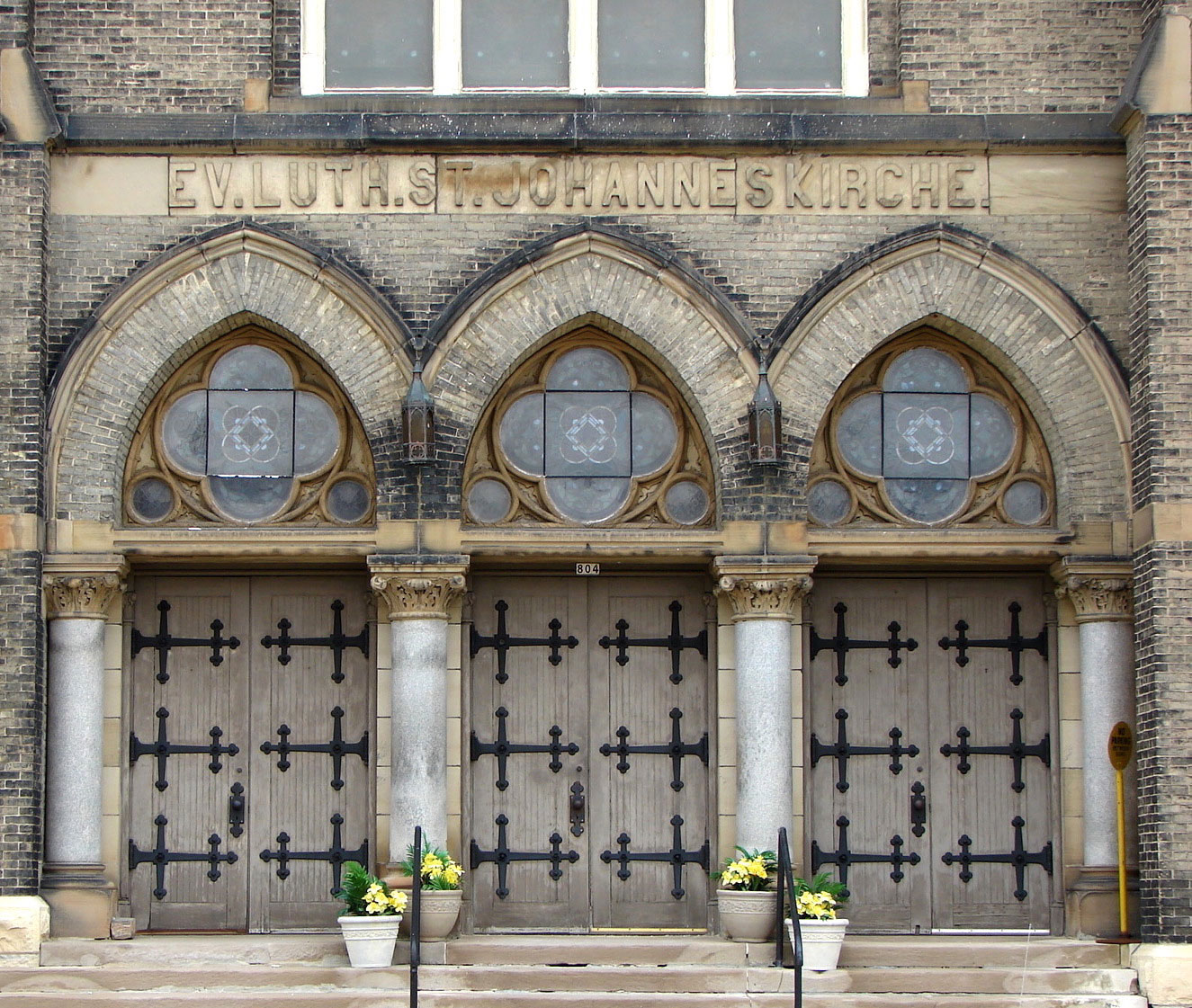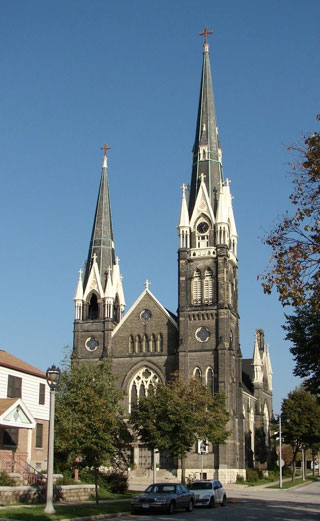31. St. John’s Evangelical Lutheran, 1889
804 West Vliet Street
Architect: Herman Schnetzky
St. John’s is one of Milwaukee’s oldest Lutheran congregations, established in 1848. Like the older Trinity Lutheran, St. John’s was founded by German immigrants. Services were conducted entirely in German throughout the nineteenth century and into the twentieth, with some English-language services offered beginning in 1908. The last German-language services were conducted in the mid-1980s.
The congregation initially acquired a former Episcopal church at 4th Street and Highland Avenue, which has since been demolished. In 1889, more than four decades after its founding, the congregation began construction of the present church at 8th and Vliet Streets, seven blocks to the northwest of its former church. The completed church was dedicated in July of 1890. St. John’s is nearly as large as the nearby Trinity Lutheran, accommodating more than 1,000 worshippers. The presence of two large German-language Lutheran churches only four blocks apart attests to the city’s population density in the pre-automobile era and the predominance of German Lutherans in this portion of the city at the time.
St. John’s Lutheran is built of Cream City brick with limestone trim for buttress caps, stringcourses, and other details. Like many of Milwaukee’s Cream City brick buildings, the exterior walls have taken on a dark grey to black coloring over the years. Octagonal pinnacles of sheet metal decorate the corners of both towers, at the point where the towers transition to the steeples. There are also two sheet metal pinnacles on each of the transept walls, and one atop the roof ridge.
The two-tower design of St. John’s Lutheran is unusual for the architect. Herman Schnetzky is known to have designed six other churches that are still standing in Milwaukee, under his own name and in his later partnership with Eugene Liebert. All of the others are in the Gothic Revival style with a tall central tower, as at St. Lucas Lutheran in the Bay View neighborhood.
The upper stage of the southeast tower of St. John’s Lutheran, with its pinnacles, clock faces, and balconies, bears a strong resemblance to the main tower of St. Peter’s Church in Leipzig, Germany. The German church was completed just a few years prior to St. John’s, and Schnetzky probably saw photographs of it in a German-language architectural publication.

The most striking feature of the interior is the lighting. The church was originally illuminated by gaslights, with the present electric lighting installed in 1909. The design incorporates more than 800 individual light bulbs lining the main arches of the plaster ceiling vaults. Although this style of lighting is now mainly associated with the marquees of movie theaters, its use at St. John’s shows how architects and interior designers experimented with the relatively new invention of incandescent lighting.
The physical setting of St. John’s Lutheran has undergone significant changes in the decades following World War II. Beginning in the late 1940s, the blocks surrounding the church were redeveloped as the Hillside Terrace Apartments, an early project of the Milwaukee Housing Authority. Later freeway construction cut through the neighborhood just a few blocks away, separating the church from downtown Milwaukee to the south and residential areas to the west. In spite of these changes, the congregation of St. John’s, like that of Trinity Lutheran, has decided to remain in the central city rather than selling the church and relocating to the suburbs.
Sources:
Historic Designation Study Report: St. John’s Evangelical Lutheran Church Complex. City of Milwaukee, Department of City Development, 1990.
Souvenir of the Ninetieth Anniversary of the Founding of St. John’s Evangelical Lutheran Church in Milwaukee, Wisconsin. St. John’s Evangelical Lutheran Church, 1938.
St. John’s Lutheran Church. Newspaper clippings file, Milwaukee Central Library, Humanities Room.
Vollmert, Les. National Register of Historic Places nomination, St. John’s Evangelical Lutheran Church Complex, 1991.
Wolters, Steven L., David D. Rinka, and Paul T. Sherwood. Historic American Buildings Survey measured drawings, 1989. HABS No. WI-321.

